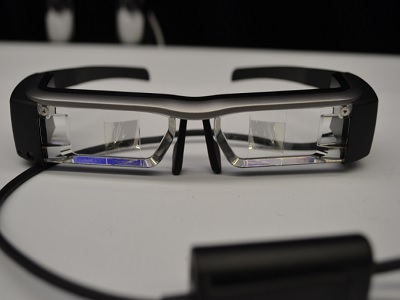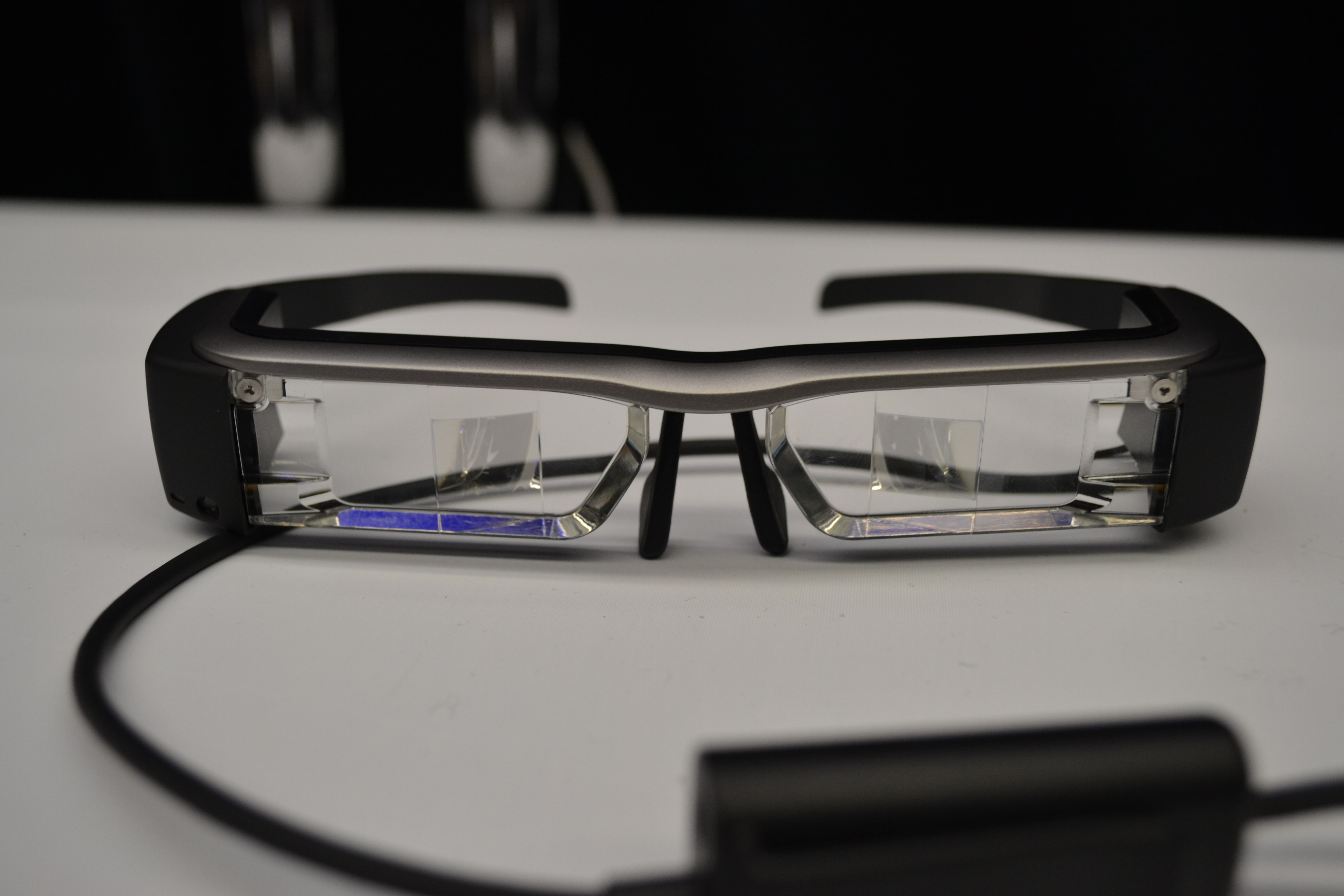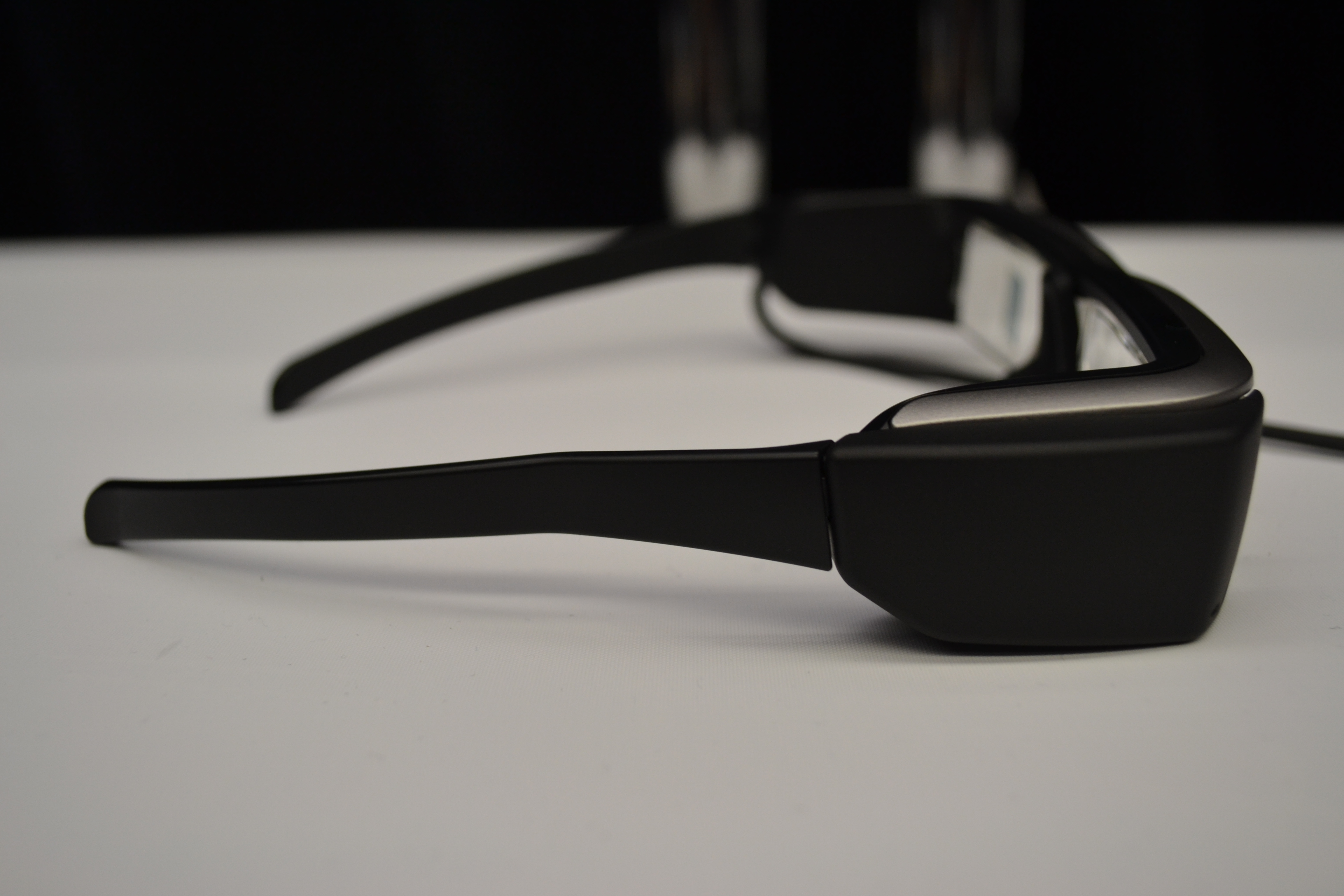Futuristic Epson Moverio BT-200 Glasses Put Android All Around You
While some wearable devices simply deliver notifications, Epson's Moverio BT-200 is a full-fledged Android computer you can wear.

While Google Glass is designed to bring notifications to your face, other manufacturers are taking a different approach to the wearable display. Take Epson, for instance, which has just unveiled its $699 Moverio BT-200 smart glasses that are capable of projecting video and images directly in your field of vision.
The Moverio BT-200, which will be available in the March-April time frame, is a binocular device that runs on Android, which means the display area covers both eyes rather than one unlike Glass. Though it looks like there are two separate displays, only one image is projected in front of your eyes. Epson tells us that the BT-200 projects transparent images at 960 x 540, or qHD. The headset also comes equipped with a bevy of sensors including a gyroscope, accelerometer and magnetic compass, which enable it to incorporate head-motion tracking as a form of input.
MORE: How To Back Up Your Android Device

To put it simply, the Moverio BT-200 looks and feels like a bulky pair of glasses. The unit weighs 88 grams, which is light enough to wear comfortably but feels a bit cumbersome. Still, this is a marked improvement over Epson’s previous-gen Moverio BT-100 glasses that weighed a hefty 220 grams.
Unlike some other heads up display alternatives, including Glass, the BT-200 isn’t meant to be an “always on” device. The headset was designed for specific use cases rather than an everyday accessory. For example, you wouldn’t put on the Moveria BT-200 before you leave your house and head to work on an average day, but you might slip them on as soon as you get home to play some video games. Or, you may wear them to view something private in a public setting, such as a confidential document from your boss.
It’s also worth noting that the BT-200 is capable of mirroring content from between devices such as set top boxes and DVD players. That’s because the glasses come with a wireless mirroring adapter that can beam content between devices with HDMI connectivity.
The first thing we noticed was the BT-200’s accompanying controller. This unit is used as an input method for the headset, although we used head-motion tracking during most of our hands on session.
Sign up to get the BEST of Tom's Guide direct to your inbox.
Get instant access to breaking news, the hottest reviews, great deals and helpful tips.

Those seeking more of an AR experience will be pleased with the BT-200 glasses. We particularly enjoyed panning our head around the room as we peered around a snowy landscape in an app called Sky Temple, and were impressed at how clear the images were. We didn’t find the image to be too distracting from other areas of our environment since it’s transparent, but we could imagine it would be difficult to walk around with it in public.
Epson tells us we’ll see an app store launch for the Moveria brand when the BT-200 launches, but the device is also capable of running any Android app. In the future, we can also expect to see apps from the likes of Namco Bandai, which plans to develop an AR fighting game for the platform.
The Epson Moverio BT-200 is yet another competitor in the augmented reality arena. Both Atheer Labs and Meta have been showcasing wearable displays that offer similar functionality, hinting that the wearable display arms race could get all the more interesting heading into 2014.
Lisa Eadicicco was a staff writer and editor for Laptop Mag and Tom's Guide. Her articles have also appeared in MSN, AOL, The Independent, Time Magazine, and many more. She is now Senior Tech Correspondant for Business Insider, covering Apple products and other gadgets.
